
Lisa Grossman is the astronomy writer for Science News. Previously she was a news editor at New Scientist, where she ran the physical sciences section of the magazine for three years. Before that, she spent three years at New Scientist as a reporter, covering space, physics and astronomy. She has a degree in astronomy from Cornell University and a graduate certificate in science writing from UC Santa Cruz. Lisa was a finalist for the AGU David Perlman Award for Excellence in Science Journalism, and received the Institute of Physics/Science and Technology Facilities Council physics writing award and the AAS Solar Physics Division Popular Writing Award. She interned at Science News in 2009-2010.

Trustworthy journalism comes at a price.
Scientists and journalists share a core belief in questioning, observing and verifying to reach the truth. Science News reports on crucial research and discovery across science disciplines. We need your financial support to make it happen – every contribution makes a difference.
All Stories by Lisa Grossman
-
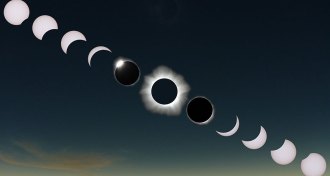 Astronomy
AstronomyWhat will scientists learn from the Great American Eclipse?
Between now and August 21, astronomy writer Lisa Grossman will explore the top questions scientists will tackle during the 2017 total solar eclipse.
-
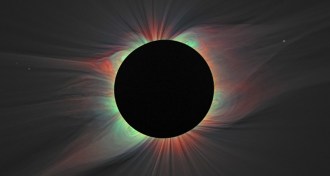 Astronomy
AstronomyWhy is this year’s solar eclipse such a big deal for scientists?
Total eclipses offer scientists a way to see all the way down to the sun’s surface.
-
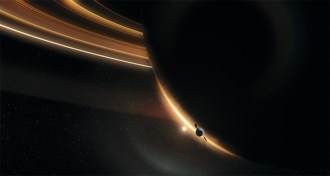 Astronomy
AstronomyNostalgic Voyager documentary relives first exploration of the solar system
A new TV documentary is a tender tribute to Voyagers 1 and 2, which launched 40 years ago and were the first spacecraft to visit the outer solar system.
-
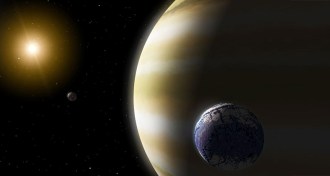 Astronomy
AstronomyAstronomers may have found an exomoon, and Hubble is going to check
A distant object may be the first exomoon detected.
-
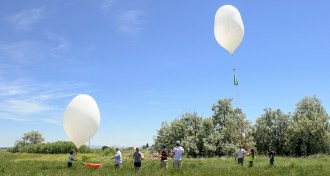 Astronomy
AstronomyBalloons will broadcast the 2017 solar eclipse live from on high
Astrophysicist Angela Des Jardins is coordinating the first-ever livestream of a solar eclipse filmed from balloons.
-
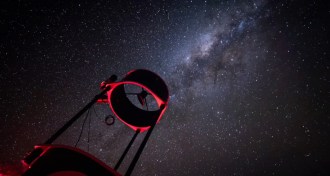 Planetary Science
Planetary ScienceNew Horizons’ next target caught making a star blink
The team behind the spacecraft that visited Pluto has seen its next quarry blocking the light from a distant star.
-
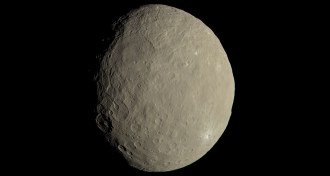 Planetary Science
Planetary ScienceGiant mud balls roamed the early solar system
The first asteroids may have been great balls of mud, which would solve some puzzling features of meteorites.
-
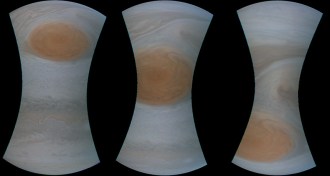 Planetary Science
Planetary ScienceHere are Juno’s first close-ups of Jupiter’s Great Red Spot
The Juno spacecraft swooped just 9,000 kilometers above Jupiter’s Great Red Spot on July 10. Here are the first pictures.
-
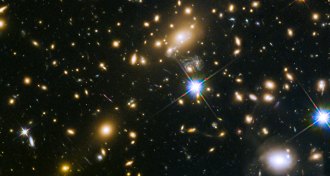 Astronomy
AstronomyThe most distant star ever spotted is 9 billion light-years away
A bright blue star sends its light from two-thirds of the way across the universe, thanks to a chance alignment with a galaxy cluster.
-
 Astronomy
AstronomyAstronomers get glimpse of star 9 billion light-years away
A bright blue star sends its light from two-thirds of the way across the universe, thanks to a chance alignment with a galaxy cluster.
-
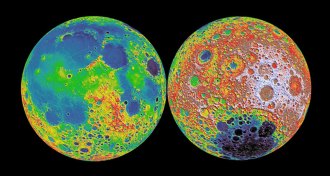 Planetary Science
Planetary ScienceThe moon might have had a heavy metal atmosphere with supersonic winds
Heat from a glowing infant Earth could have vaporized the moon’s metals into an atmosphere as thick as Mars’, a new simulation shows.
-
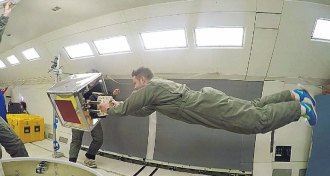 Tech
TechGecko-inspired robot grippers could grab hold of space junk
Aboard a microgravity plane, NASA is testing gecko-inspired grippers that one day could help clear up space junk.